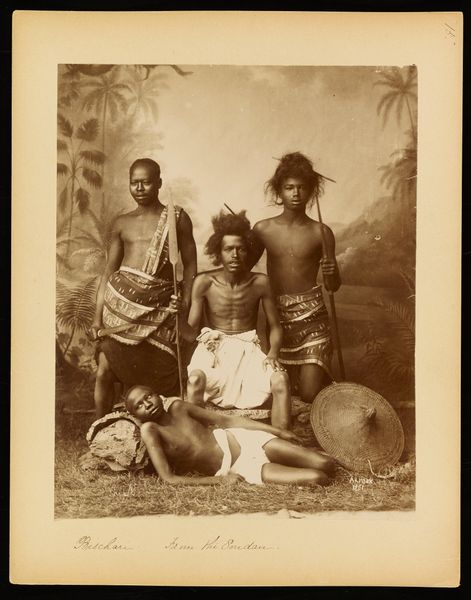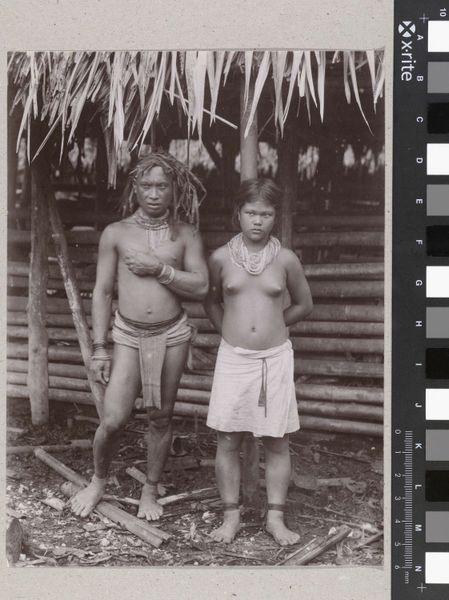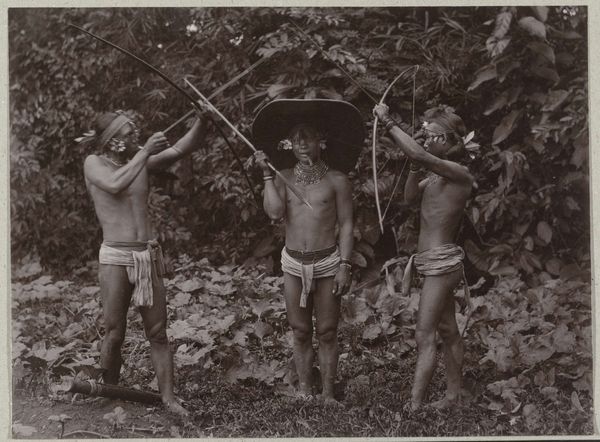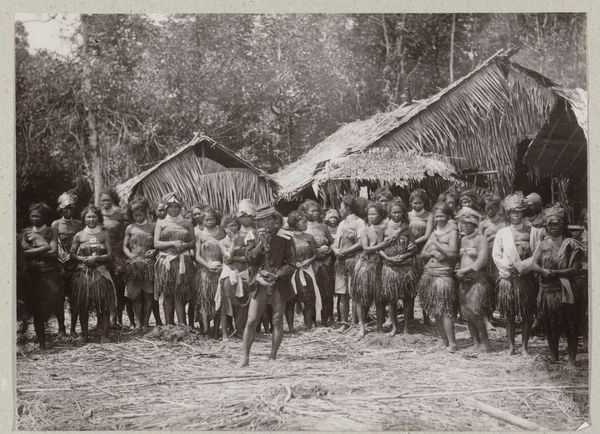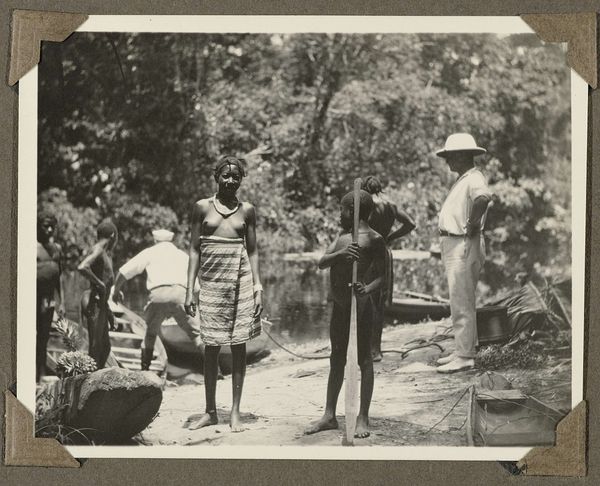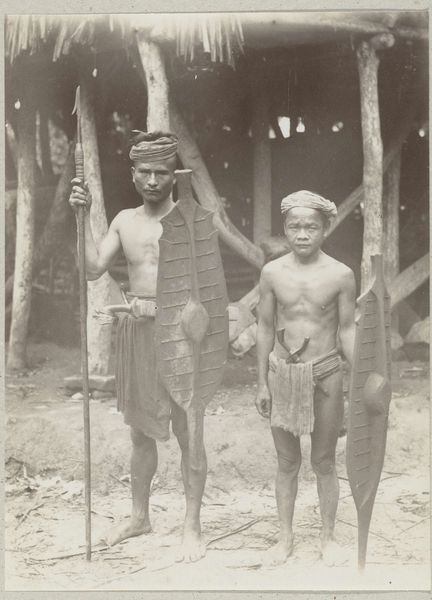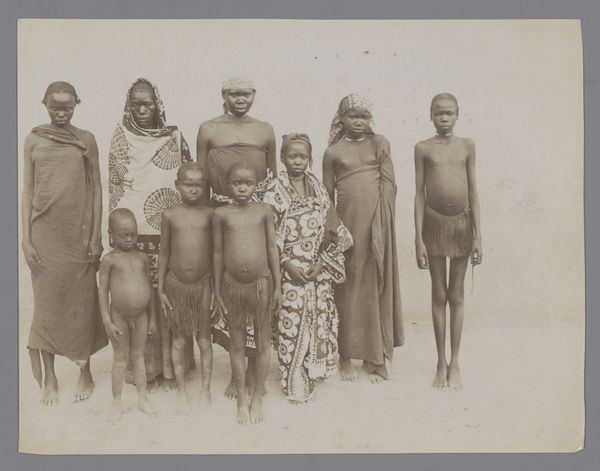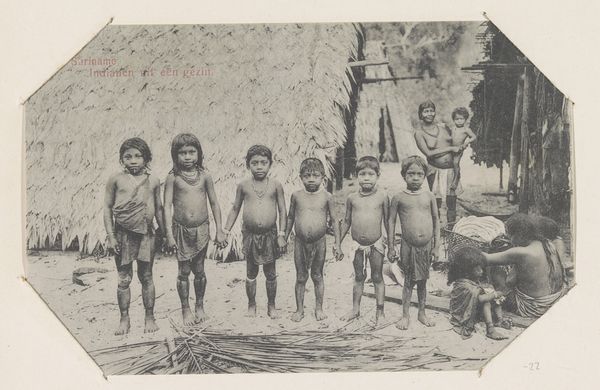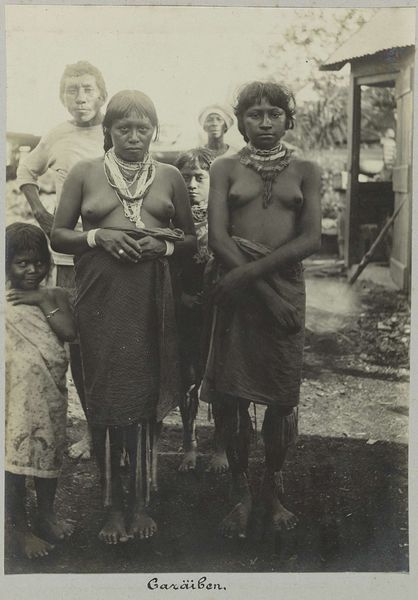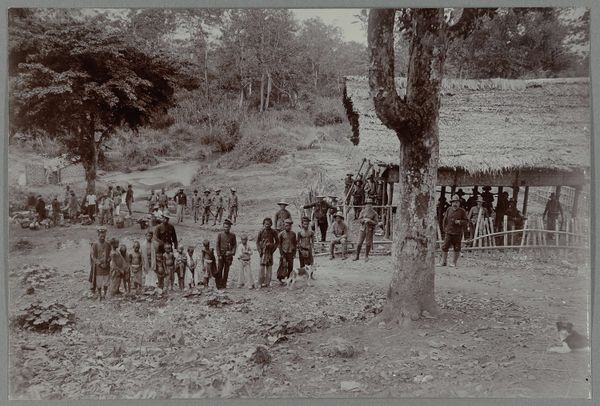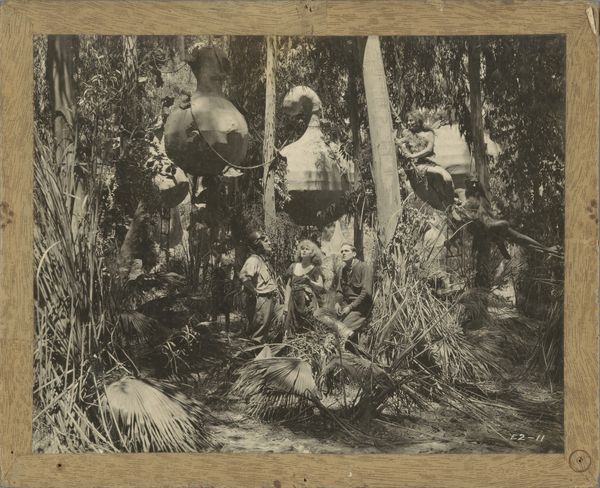
Group portrait of six unknown Vedda men in the forests of Sri Lanka 1862 - 1903
0:00
0:00
photography, gelatin-silver-print
#
landscape
#
photography
#
forest
#
group-portraits
#
orientalism
#
gelatin-silver-print
#
19th century
Dimensions: height 219 mm, width 283 mm, height 326 mm, width 368 mm
Copyright: Rijks Museum: Open Domain
Curator: This gelatin-silver print, dating roughly from 1862 to 1903, presents a "Group portrait of six unknown Vedda men in the forests of Sri Lanka." The photograph is attributed to William Louis Henry Skeen. Editor: The image strikes me as both stark and intensely intimate. The direct gazes of the men, contrasted against the forest's edge, evoke a sense of vulnerability, of being on display. There's also something undeniably ethnographic about the scene that is off-putting to me. Curator: The composition adheres to the conventions of group portraiture while incorporating elements we now recognize as Orientalist tropes. Their bodies emerge from the dense forest backdrop, and what do you make of the subtle differences in their garments and implements? They provide ethnographic cues. Editor: Precisely. This "scientific" gaze reduces the men to specimens, doesn’t it? While supposedly documenting a culture, it exoticizes them, casting them as "other" in relation to a Western audience. I imagine the taking of such a photograph also involved very complicated politics, dynamics of colonialism, etc. Curator: You make an important point. While there's a realism at play, typical of photography, this also suggests how such portraits might participate in objectifying a culture. The spears and rudimentary clothing also become part of the visual coding – immediately signifying "indigenous" in a colonial context. Editor: Absolutely. We must remember this image circulates, performing symbolic violence as an artifact of colonial power. Who has the right to represent whom, and under what circumstances? These are questions we must ask. Their story should be theirs to tell. Curator: We must indeed resist simple, uncomplicated interpretations of this image. Despite being unknown, and viewed across the distance of time and cultural difference, we see the image of their dignity preserved. The details you brought out make this all the more compelling. Editor: Exactly. Seeing their faces is not just seeing a record of what someone looked like, but bearing witness to survival and resistance. The forest is not just backdrop. It represents an ancestral link to the land that these people represent and defend.
Comments
No comments
Be the first to comment and join the conversation on the ultimate creative platform.


